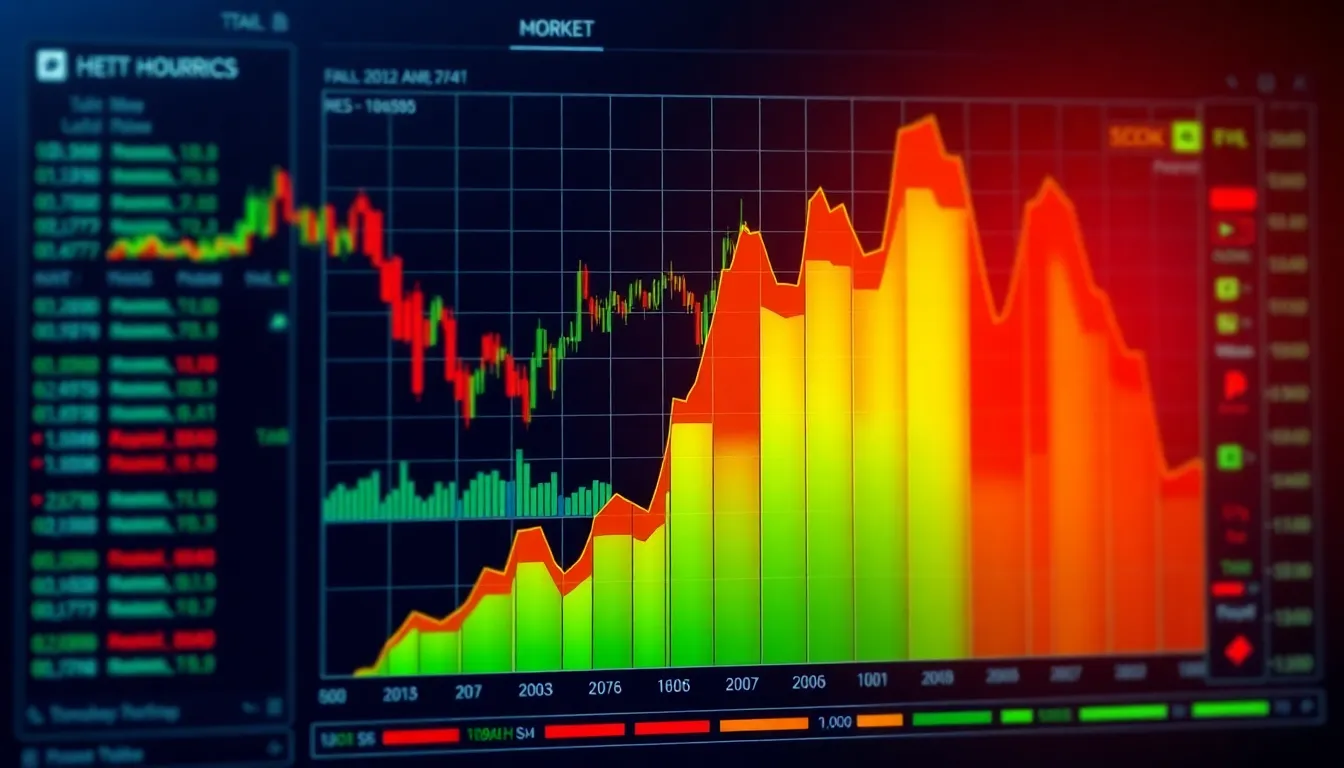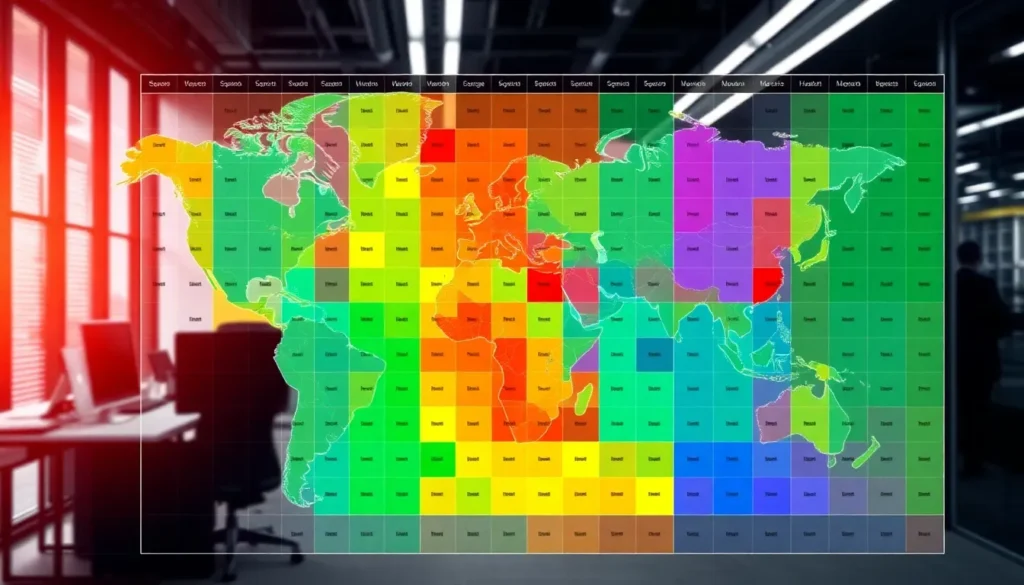Table of Contents
ToggleNavigating the stock market can feel like trying to find your way through a maze blindfolded. Enter the heat map—a colorful, eye-catching tool that turns chaos into clarity. With its vibrant hues and easy-to-read layout, it’s like having a cheat sheet for market trends right at your fingertips.
Understanding Heat Maps
Heat maps provide a visual representation of stock market trends, aiding investors in making informed decisions. Color-coded indicators display stock performance across different sectors, facilitating quick analysis.
What Is a Heat Map?
A heat map visually depicts stock performance using colors to indicate price movements. Green shades represent gains, while red signifies losses. This format allows investors to quickly identify trends and anomalies in the market. By displaying data in a compact manner, heat maps reveal relationships among various stocks.
Importance in Stock Market Analysis
Heat maps play a critical role in stock market analysis by simplifying complex data. They enable investors to quickly gauge market sentiment and identify strong or weak sectors. Analysts use heat maps to spot correlations among stocks, helping predict potential market movements. These tools assist in portfolio management by highlighting opportunities and risks, ultimately leading to more strategic investment decisions.
How Heat Maps Work

Heat maps provide a visual summary of stock performance that helps investors navigate the market. They utilize vibrant colors to convey information quickly.
Data Visualization Techniques
Color coding serves as the foundation of data visualization in heat maps. This technique combines spatial organization with color to present information clearly. Each sector in a heat map corresponds to different industries, creating a structured overview. Size and intensity of color offer insights into market activity and performance levels. By aggregating data from multiple stocks, investors perceive trends that might remain hidden in traditional charts. The approach assists in recognizing outliers and identifying sectors deserving further analysis.
Interpreting Color Gradients
Color gradients play a central role in interpreting heat maps. Shades of green indicate gains, while varying shades of red reflect losses. The intensity of these colors signals the magnitude of changes in stock performance. Lighter shades may denote minimal fluctuations, whereas darker hues indicate significant movements. Investors quickly assess overall market sentiment through these gradients. Patterns emerge when comparing sectors side by side, allowing for a clearer understanding of relative performance. Mastering the interpretation of these colors enhances decision-making and aids in strategic portfolio adjustments.
Applications of Heat Maps in Stock Markets
Heat maps serve multiple applications in stock market analysis, aiding investors and analysts in making informed decisions.
Identifying Trends and Patterns
Heat maps effectively reveal trends and patterns in stock performance. Investors can observe color gradations that indicate sectors gaining strength or facing weakness. Rapid identification of these visual trends allows for quicker response times to market fluctuations. By highlighting consistent gains or losses, heat maps assist in recognizing potential investment opportunities. Various color codes denote the magnitude of changes, guiding investors toward more strategic decision-making processes.
Sector Analysis Through Heat Maps
Sector analysis benefits significantly from heat maps. Each sector’s performance stands out in vibrant colors, illustrating overall market health at a glance. Analysts can pinpoint which sectors outperform others based on the intensity of colors. This visual representation promotes better understanding of market dynamics and guides sector-specific investment strategies. Observing correlated performance among sectors helps identify potential risks and rewards for investment portfolios. Overall, heat maps streamline the process of sector analysis, making it more efficient and insightful.
Advantages and Limitations
Heat maps offer valuable insights into stock market trends, making them essential tools for investors. Understanding their benefits and limitations aids in maximizing their effectiveness.
Benefits of Using Heat Maps
Heat maps simplify complex data by visually representing stock performance across various sectors. Quick assessments are possible through intuitive color coding; green indicates gains while red reflects losses. Investors identify trends easily with this visual layout, allowing for informed decision-making. Portfolio management becomes more efficient as analysts spot correlations and anomalies across stocks. Immediate recognition of strong or weak sectors guides strategic investments. Additionally, heat maps help gauge overall market sentiment at a glance, enabling timely responses to fluctuations.
Limitations to Consider
Heat maps may not capture all nuances of stock performance. Complex data can lead to oversimplification, potentially masking critical information. Misinterpretation of colors may occur, especially for investors unfamiliar with the system. Market volatility increases risks; a heat map might reflect significant short-term changes that do not indicate long-term trends. Data aggregation limits individual stock analysis, making it harder to assess the performance of specific companies. Investors must consider these limitations when relying on heat maps, ensuring comprehensive analysis alongside their use.
Heat maps serve as an essential tool for investors looking to navigate the complexities of the stock market. Their visual representation of stock performance simplifies data interpretation and enhances decision-making. By quickly identifying trends and sector strengths or weaknesses, heat maps empower investors to respond effectively to market changes.
While they offer significant advantages in data visualization and trend analysis, it’s crucial for investors to remain aware of their limitations. Misinterpretation and oversimplification can lead to misguided decisions. Balancing heat map insights with thorough analysis ensures a more comprehensive understanding of market dynamics, ultimately leading to more strategic investment choices.




